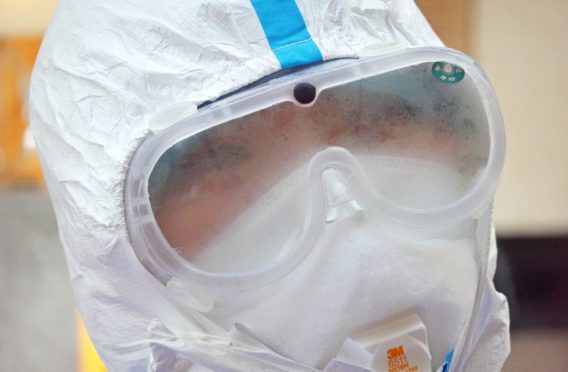There is no doubt about the word of the year so far. It is Coronavirus, even though the World Health Organisation want us to say COVID-19.
The WHO want to distinguish it from other strains of SARS-CoV-2, the virus that causes the disease. COVID is an acronym. The CO stands for corona, VI is for virus and D is for disease. The 19 is because the disease was first seen in 2019.
The virus, under a microscope, is shaped like a crown. Corona being the Latin root of crown.
I’m somewhat bemused, but also very interested, by how all this is being reported. It’s a little panicky for my Scottish-common-sense taste. It surely doesn’t mean the Gods are looking up my file if someone sneezes close by. A runny nose won’t see me self-isolating (a candidate for phrase of the month). And I just wouldn’t suit a face mask.
I can’t work out why COVID-19 is given such close focus when from December to March 2017-18 there were 810 deaths in Scotland (gov.uk figures) attributed to influenza or pneumonia. I’ll give the warnings the fullest respect, of course, but there is clearly something I don’t understand about this germ.
Perhaps my lack of understanding is illustrated by words like “germ”. It is a good example of the difference between the precise terms scientists use in laboratories compared to the words that we, the general public, bandy to interpret the complicated work done in such places.
Germ is from the Latin “germen”, meaning offshoot, sprout, foetus. It has been part of our language since 1644. Back then it described any small organism such as the kernel inside a seed husk. We still say wheat germ.
You can see why, centuries later, germ sounded apt when folk sought to understand the newly revealed concept of an invasion by entities too small to see. A tiny living thing, they reasoned, became planted inside us and grew.
Microbe, another common word, isn’t a scientific term either. It was coined by Louis Pasteur (who invented pasteurisation) to explain his work. A modern scientist would use “pathogen” to describe a disease-producing microorganism.
I also have a bee in my bunnet about the definition of the word “pandemic” during all this. To my simple mind the word’s roots are pan (all) and demos (people). Therefore a pandemic is a disease all people on earth have contracted. And that isn’t what has happened. Yet.
Word of the week
Zoonotic (adjective)
Describes a disease which can be transmitted from animals to humans. EG. “COVID-19 is the latest zoonotic disease to trouble mankind.”
Read the latest Oh my word! every Saturday in The Courier. Contact me at sfinan@dctmedia.co.uk










